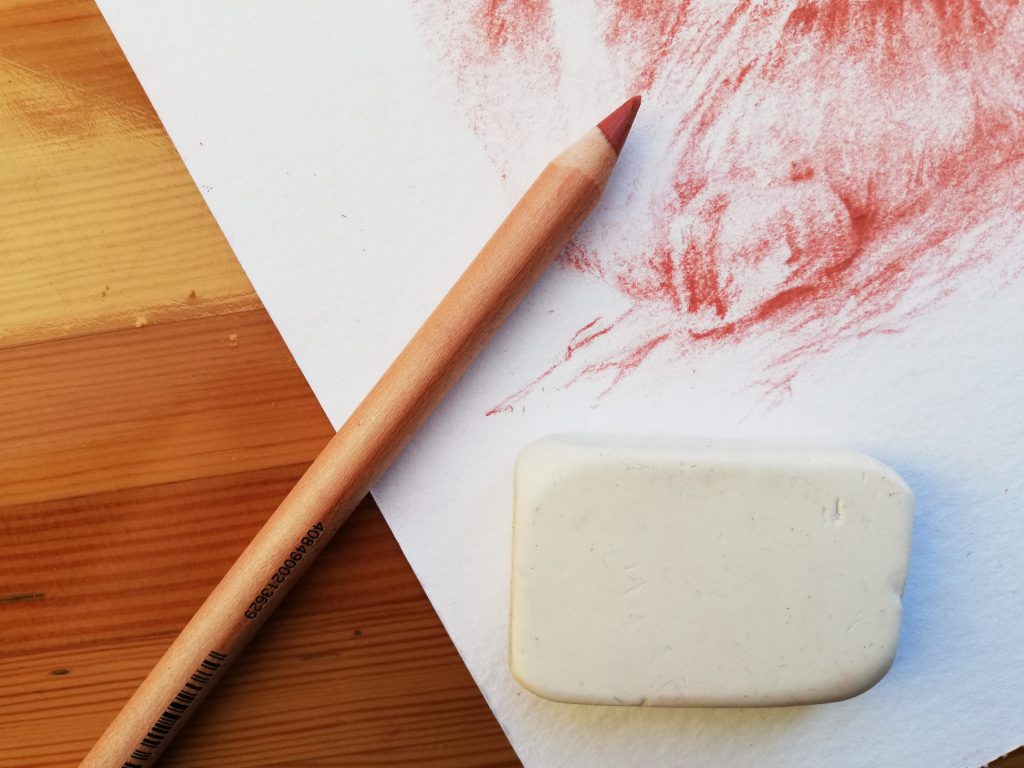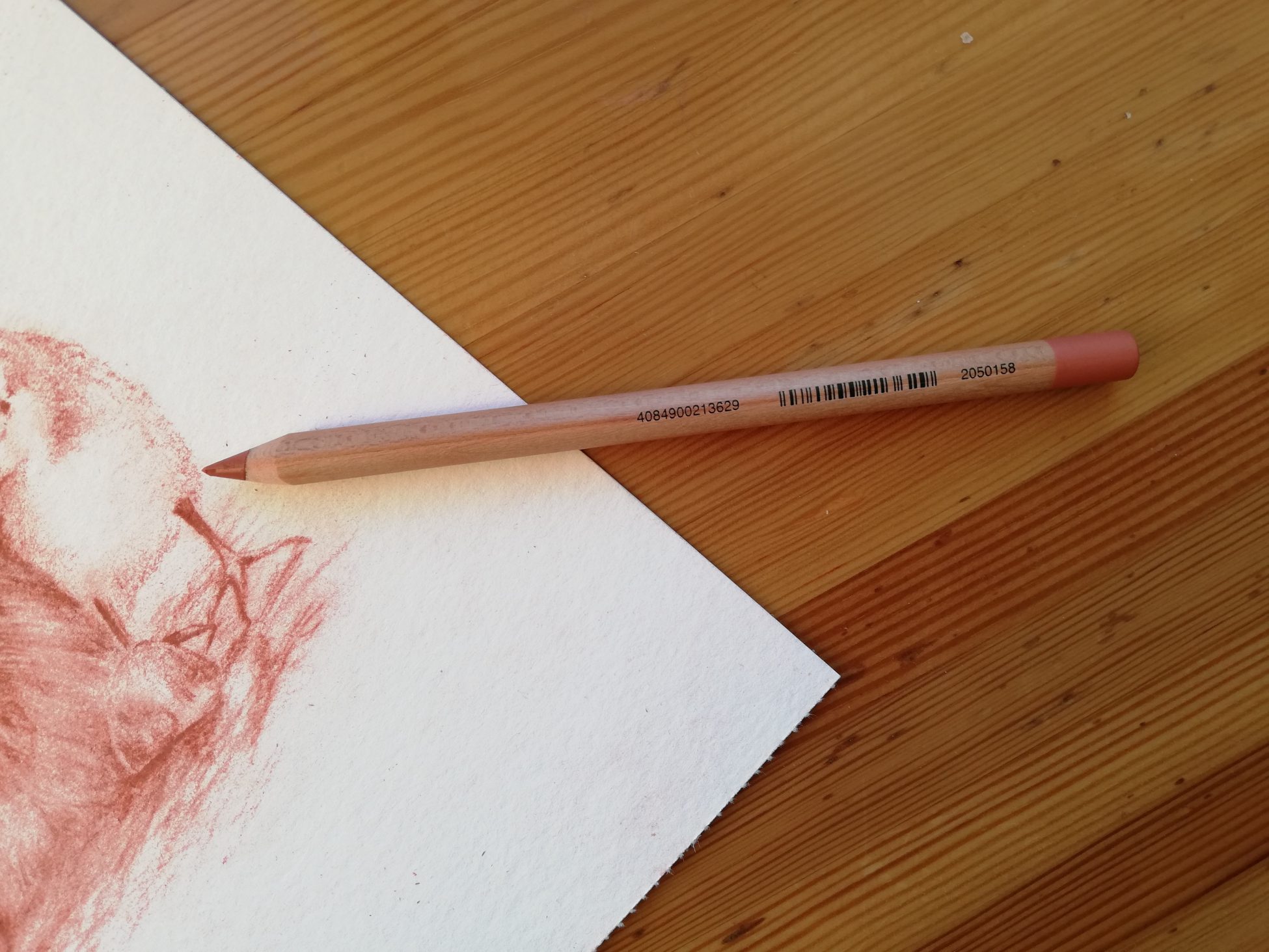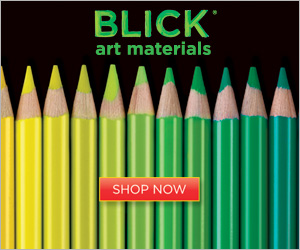I like regular pencils but sometimes it seems to me that grey graphite sketches look too stern.
Reddish-brown sanguine drawings are much warmer.
About The Material
Red chalks produce a specific rust color because they are made of iron oxide. That natural medium has been widely used since the Renaissance. Raphael, Michelangelo, and many other Italian draughtsmen implemented various sanguine techniques.
Not long ago, the material was available only in the form of sticks. Today we can also buy wood-cased red chalks.
Such pencils have either a smooth or grainy, friable lead – depending on whether the lead is oil-based.
Dry chalks are perfect for defining details; while oil pencils are ideal for fast sketching. Sanguine will allow you to create realistic nude studies, expressive portraits, or romantic rural landscapes.
Before You Start
I would advise you to try using a dry pencil first. Don’t worry, its core is durable enough; you won’t break it.
A sanguine pencil resembles charcoal sticks and pastel crayons, but it’s a bit harder. Use the point to draw fine lines, then work with the flat side of the lead to cover large areas.
The marks may be smudged – just rub them (you may use both an eraser and your own finger).

Smudging provides rich tonal gradations.
Keep in mind: sanguine lines don’t disappear completely. They’re more resistant to fading than you probably expect. Avoid applying heavy pressure to the paper if you are not sure that the stroke is correct.
Create various effects like soft shading and cross-hatching.
Experiment with different types of paper. The rougher a surface, the more fragmented marks you’ll get.
In order to simplify your task, opt for a relatively big paper size. Red chalks are good for large-scale drawings.
When the first masterpiece is finished, you will need a fixative spray. It’ll help to preserve the artwork in the most effective way.
*If you buy something through the banner I will earn a commission, at no cost to you. More info


